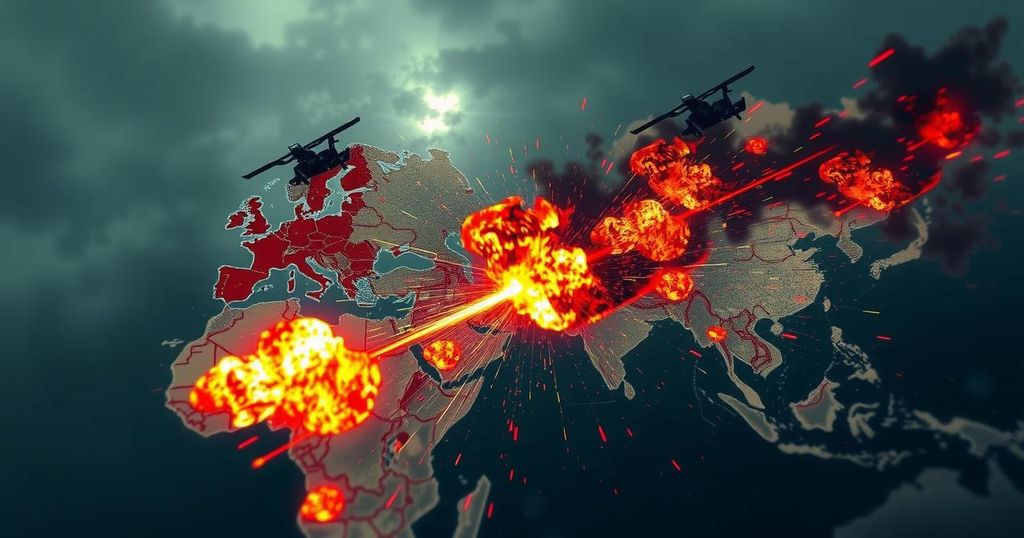Assessing the Human Cost of Sudan’s Civil War: A Call for Global Attention
Sudan’s civil war has led to an estimated 62,000 deaths, compounded by significant challenges in accurately assessing mortality due to a lack of reliable data and ongoing ethnic violence. The conflict has displaced over 14 million people and devastated health systems, primarily affecting vulnerable populations, including children. Major complications arise due to the targeting of medical facilities, resulting in an urgent humanitarian crisis that demands global attention and intervention.
The civil war in Sudan has resulted in an estimated death toll of at least 62,000, a number that is likely to be underestimated given the conflict’s multifaceted nature and the challenges associated with gathering accurate mortality data. Since April 2023, when hostilities erupted between the Sudanese Armed Forces and the paramilitary Rapid Support Forces, the country has experienced a catastrophic humanitarian crisis marked by extensive displacement, food insecurity, and ethnic violence. More than 14 million individuals have been displaced as the conflict has exacerbated existing vulnerabilities. The task of counting the casualties from such a protracted conflict is fraught with complexities. Indirect deaths, which arise from factors such as the breakdown of healthcare systems and lack of essential goods, contribute significantly to the overall mortality but are difficult to quantify. U.S. Special Envoy to Sudan, Tom Perriello, acknowledged this difficulty by providing a broad estimate of deaths ranging from 15,000 to 150,000. Reports such as those from the Armed Conflict Location and Event Data project (ACLED) and the Sudan Doctors Union suggest nearly 19,000 direct deaths within the conflict’s first 15 months. Utilizing previous research, including a notable Lancet study that determined a significant ratio of indirect to direct deaths in similar conflicts, we can conservatively estimate that the current situation in Sudan has led to an accumulated death toll exceeding 62,000 when both direct and indirect fatalities are considered. Alternatives to our method, which suggest an even higher ratio of indirect deaths, imply the potential reality of up to 130,000 total deaths in Sudan. The unfolding tragedy is compounded by the systematic targeting of healthcare infrastructure and personnel, resulting in approximately 80% of medical facilities being rendered inoperative and grave shortages of essential supplies. Vulnerable populations, particularly in regions like Darfur, face acute malnutrition and the rampant spread of communicable diseases amidst collapsing healthcare services. The severe consequences of this conflict on children are particularly alarming, with reports indicating that 13 children die each day due to malnutrition in Zamzam camp alone. The humanitarian crises manifest not just as immediate violence but extend to longer-term health complications, creating a dire need for comprehensive humanitarian assistance and international attention. Furthermore, the existing body of data illustrates just how difficult it is to assess the full impact of such violence, and it is crucial to continue efforts in monitoring and documenting the dire situation in Sudan to advocate effectively for necessary interventions.
The ongoing civil war in Sudan, beginning in April 2023, has escalated into a profound humanitarian crisis, resulting in significant loss of life and drastic public health concerns. Both the Sudanese Armed Forces and the Rapid Support Forces have engaged in conflict against the backdrop of a dysfunctional healthcare system. The resultant humanitarian crisis, marked by displacement, food scarcity, and ethnic violence, necessitates a detailed understanding of the indirect and direct mortality related to the conflict. Global attention has largely diverted towards more publicly highlighted conflicts, thus highlighting the critical need to keep the situation in Sudan within the international dialogue.
In summation, the conflict in Sudan not only represents a dire humanitarian crisis but also poses severe challenges in estimating its full death toll due to factors such as mass displacement and healthcare system disintegration. Current estimates suggest a minimum of 62,000 deaths, a figure poised to rise as the situation deteriorates. The ongoing targeting of healthcare infrastructure exacerbates this humanitarian catastrophe, particularly affecting vulnerable populations, notably children. The international community must ensure that attention remains focused on Sudan, recognizing the urgent need for comprehensive humanitarian support and accountability for those responsible for such widespread suffering.
Original Source: theconversation.com







Post Comment